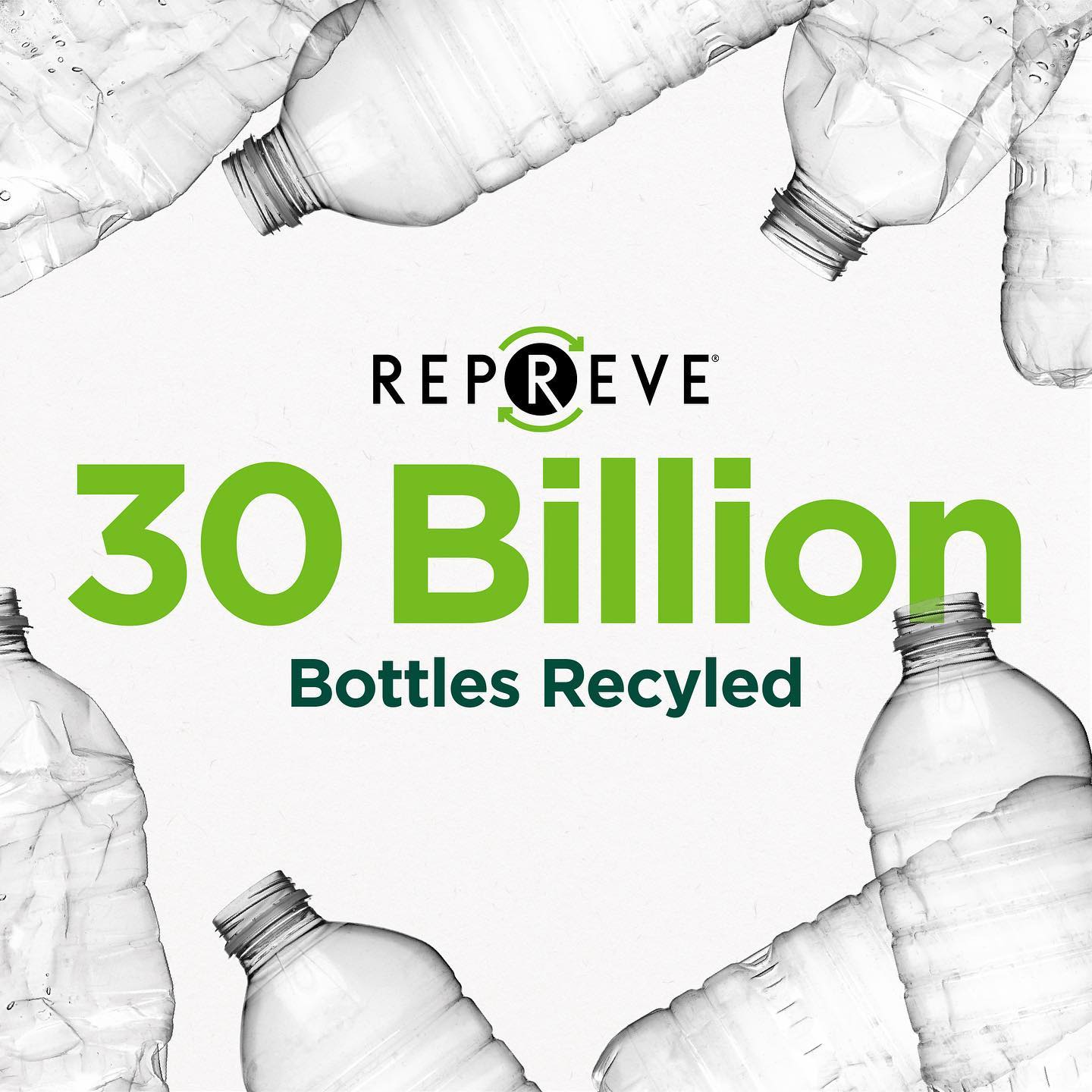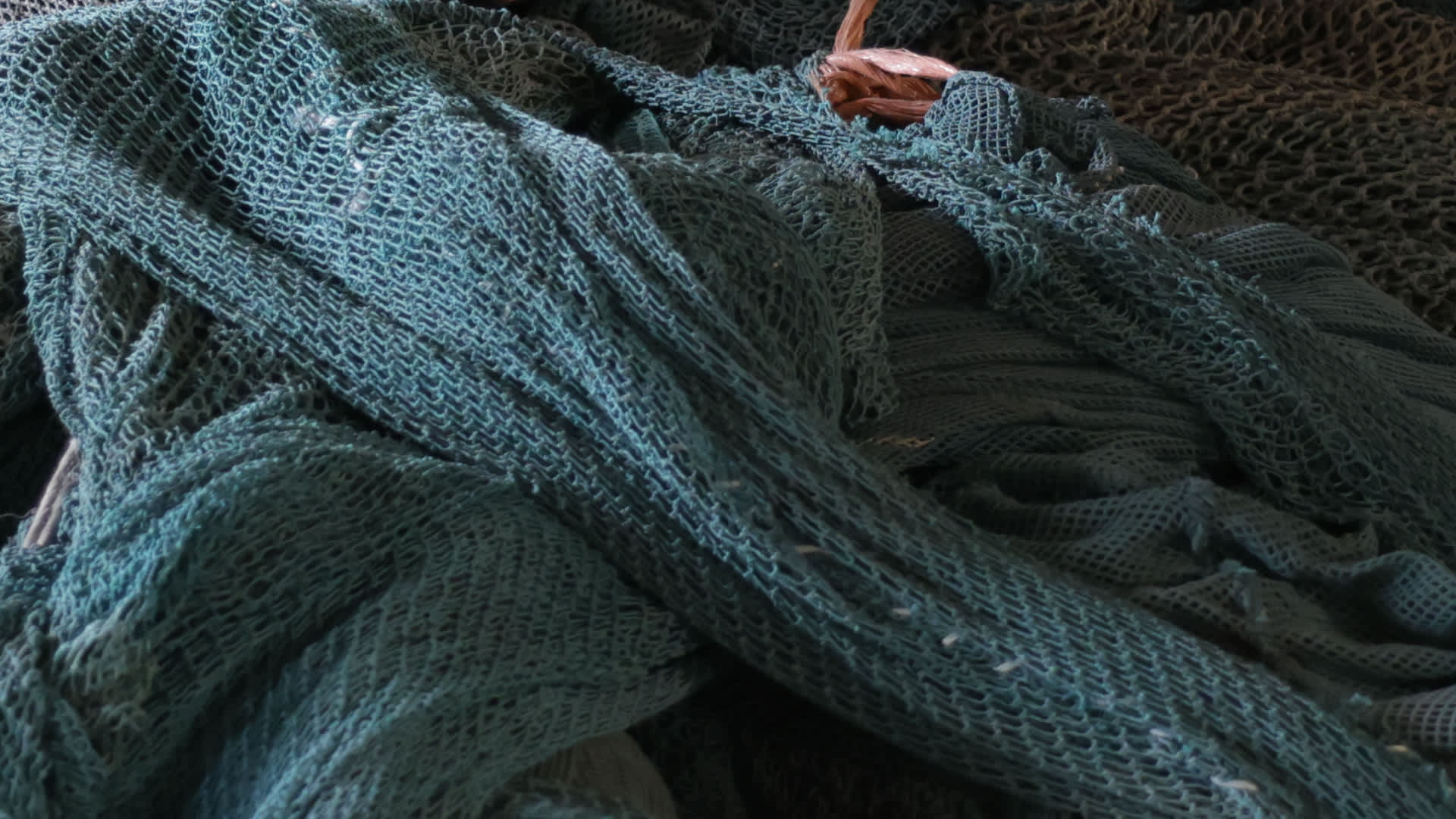For some brands, it means making commitments during production to lower their carbon footprint or reach zero net emissions in the next few years. For others, sustainability goes down to the product level, with swimsuits created from environmentally-friendly fabrics and other materials. The usual suspects are organic cotton, recycled polyester, recycled nylon, and organic materials like hemp – a real trend to keep an eye on as we move forward with the 2022 swim season.
Still, we understand that not everyone is an expert in sustainably-sourced fabrics, so we put together this post to outline the basic differences between the most widely used recycled and organic materials for swimsuits.

Photo: Courtesy of Repreve


Photo: Courtesy of Econyl
ECONYL® yarn
If you've never heard of this material, get ready for a quick science lesson because it's one of the most inventive uses of recycled materials you've ever seen. ECONYL® yarn helps divert global waste streams that would otherwise pollute the Earth such as fishnets, carpets, and industrial plastic; however, the manufacturing process ensures that the recycled nylon is just as good as the original material. That's why some experts say nylon is one of the most recyclable items on the planet since you can use certain processes to recreate a material that's almost the same quality as the original.
The general idea is that any item with nylon, such as old carpets and clothing, is a candidate for recycling. The first step is to separate, clean, and compact the recycled materials before additional processing at the chemical level. The proprietary process used to make ECONYL® pulls apart and then recombines nylon polymers to recreate the original material’s characteristics, which then goes on to production facilities to be made into fabric and yarn. The transformation is so impressive that many people won’t be able to tell the difference between ordinary nylon and recycled nylon unless you tell them.

Photo: Courtesy of Econyl
The Acquafil Group, the Italian company behind this innovative process, has recently launched an e-shop allowing conscious shoppers access to products made from ECONYL® Regenerated Nylon in one place for the first time.
Tropic of C, Abysse Official, Dos Gardenias, Botanical Beach Babes, Ludovica Gualtieri Milano, Voglia Swim, and Jade Swim are some of the brands that are currently using ECONYL® yarn.
REPREVE® - 30 Billion Bottles Recycled
REPREVE® comes from a different source, and it may also come as a surprise to you: recycled plastic bottles. We expect synthetic fabrics to come from any number of chemical ingredients, but usually, we don't think of recycled plastic bottles as a possibility. Nevertheless, REPREVE® is widely available, mainly since the source material is abundant. And the recycling processes used to refine recycled plastic into fabrics have been improved in recent years. The science behind REPREVE® is pretty complex, yet it's the result that matters most.
Whereas some synthetic fabrics actually absorb too much water for a quality swimsuit, swimwear made from REPREVE® does a better job at keeping moisture out of the fabric. It's also great at thermoregulation, meaning that the material doesn't make your body too hot or too cold after wearing it for a long time. You may not know that thermoregulation is important in swimwear because, without it, swimming in water that's slightly too cold can be a very unpleasant experience after a few minutes.
Companies using REPREVE® are among others: Mara Hoffman, Seea, Vitamin A

Photo: Vitamin A Website
Not only that, but REPREVE® fabric also does well at controlling odors, which is yet another reason why it works well for all types of clothing. Now, let's talk about the difference between Yulex neoprene.
YULEX neoprene
If you've never worn a rubber wetsuit, consider yourself lucky because they're not exactly comfortable to wear. They might be necessary for chilly water when scuba diving or surfing, but the vast majority of us don't wear this type of material very often. Since making wetsuits from natural rubber is complex and expensive, manufacturers came up with neoprene as an alternative. In specific scenarios, neoprene is cheaper to produce and performs better than natural rubber.
Having said that, what's the difference between ordinary neoprene and YULEX? Usually, neoprene isn't biodegradable, and it can be harmful to the environment. That's really the main downside of using neoprene because it's a synthetic material that doesn't break down quickly, if at all, but YULEX is unique. It still uses natural materials from rubber plants, yet the entire process used to create them is sustainable from end to end.
But the company that makes YULEX has made a legitimate, genuine commitment to environmentally friendly methods, including purity and quality controls. The result is a material that is the perfect alternative to non-biodegradable neoprene. Patagonia pioneered the transition from neoprene to plant-based YULEX, and generously made the technology available to other brands. Finisterre, Fourth Element, and Seea among others are currently using YULEX for their surf wetsuit.
AMNI® Soul Eco-Conscious fashion
Now we come to one of the most interesting "intelligent" fabrics making their way into the designer swimsuit industry: AMNI® Soul Eco. It's essentially a special type of polyamide – in other words, nylon – with enhanced properties to make the materials break down in landfills under the right conditions. Usually, synthetic fibers like nylon have little to no biodegradability. If the figure is 50 years, consider yourself lucky because some don't break down at all. Any thread with the same general molecular structure can be called a polyamide, so AMNI® Soul Eco's 6.6 yarn is still technically nylon. The difference lies in how safe the fabric is for the environment.
Genuine sustainability means doing everything you can to keep our world clean and safe for generations but pause and think about it this way. How often do we consider how our swimsuits will break down in landfills? Most of us never give it a second thought until we realize how harmful old clothing can be when it doesn't degrade naturally. AMNI® Soul Eco goes in the opposite direction and breaks down in about five years instead of five decades. While the manufacturer keeps the formula for AMNI® Soul Eco as a trade secret, we know how well the fabric works for swimsuits since it's comfortable and easy to care for.
Styelle Swim has been the first brand in Australia to have used AMNI® Soul Eco Fluity CO2 biodegradable fabric since 2018. “We have reached our goals to have our products completely sustainable by 2018 and are screaming it from the rooftops,” says Charys Calderalla, founder and designer of Styelle Swim.
Sustainable hemp swimwear – A trend coming on the horizon?
Those are the top four eco-friendly swimwear materials, but what can you expect to see in the near future? Is there a trend coming on the horizon that could give you even more options? Without a doubt, we feel that hemp isn’t getting enough credit as a sustainable swimsuit material. Not only is it safe for the environment, but it’s also widely available at this time. Honestly, it’s been around for a while, yet not many sustainable swimwear brands are clamoring to jump on board – but they will be soon.
Many growers produce hemp using natural processes with no added pesticides and toxic compounds that can run off into the water supply. Part of the reason is that the authorities often regulate the hemp industry tightly since the plant is a close relative of the cannabis plant.
That's why hemp growers produce such a high-quality product; they understand that sustainability is their responsibility, and they make a genuine commitment to protecting the environment.
Cotton and hemp swimwear is certainly a bit different from its synthetic-fabric sisters; it doesn’t dry out as fast, and you won’t find any neon colors in these natural fibers.
Unfortunately, there aren’t yet too many companies making cotton or hemp swimwear, but we’ve managed to find a few pioneers making super stylish bathing suits that look great wet or dry; Luz Swimwear, Natasha Tonic, Hemp Hugger, and The YanLove.
Ultimately, you can't go wrong with any sustainable fabrics used in today's swimwear. In fact, you may have a sustainably-sourced one-piece in your summer wardrobe right now and not even realize it! The industry has matured that much over the last few years and will continue to do so moving forward.







